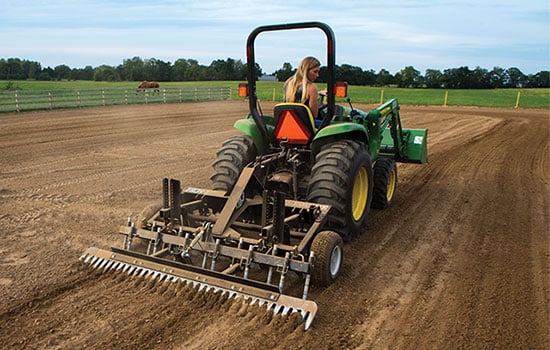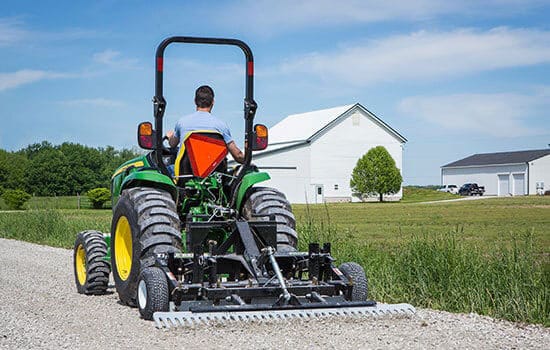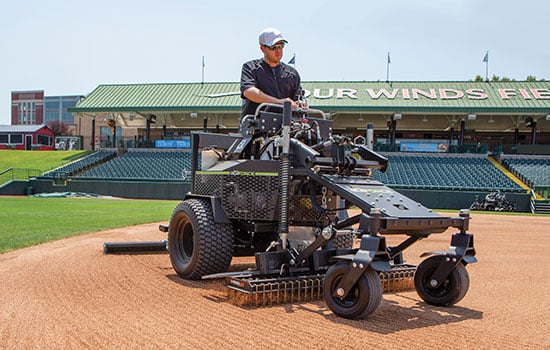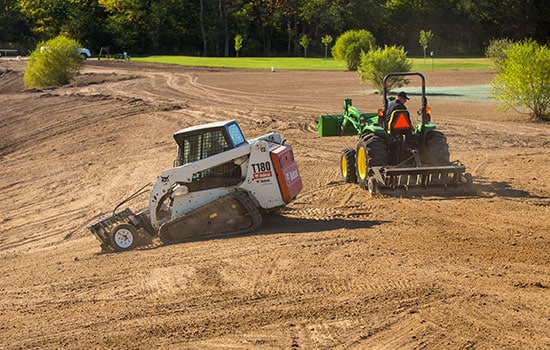Winterizing Your Water Trailer – ABI Dirt
ABI Products Shown In This Video

550 Gallon Compact Water Trailer
- Starting At: $195/mo.*
- Farm Use: Compact Tractor
- Min. Vehicle Weight: 2,400 lbs. On Flat Ground, Towing Capacity 5,200 lbs. On Uneven Terrain

1000 Gallon DOT Water Trailer
- Starting At: $387/mo.*
- Road-Ready For 3/4-Ton Truck
- Min. Vehicle Towing Capacity: 10,200 lbs., Dual Axle, Commercial Platform
Transcription
Hi, everyone. Matt here with ABI attachments. Welcome back to another episode of the ABI Dirt. It is getting chilly outside, my bald head is telling me it’s almost winter, which means it’s time to talk about how to best winterize your attachments. A lot of you are in climates where it gets to some deep freeze zone. And even for those of you who feel like you’re in climates that you shouldn’t have to worry about freezing, I know in years past you’ve also had to endure some nasty ice situations. So our products are fantastic to work throughout the winter. However, some of them do require a little bit of TLC, some tender, loving care as you get into a deep freeze kind of state. So today we are taking a close look at our water trailers. So if you have a water trailer, whether it’s one of ours or whether it’s not, if you’ve got a water trailer and you want to know how to best prepare it to prevent anything nasty, like cracks and freezing and damage to happen in the wintertime, we’re gonna talk through all of our steps here today on the Dirt.
There are two ways that you can prepare your water supply for winter season to prevent cracks and damage. The two ways are either a full drain, get all the water out of the system, or use antifreeze to keep that water so that it can’t freeze once it’s in the system. Now, today we happen to be sitting in front of our 550 gallon compact water trailer. It’s got a Pacer pump and a Honda motor. But whether your water supply is stationary, whether you’ve got it on a stand, whether you’ve got a homemade water trailer, it doesn’t matter. These steps are going to apply to you. No matter what direction you go, either full drain or adding antifreeze, the first step is the same for either path and that’s to take care of your motor. Likely you’ve got more than one small engine on your property. Make sure to take the same maintenance steps, the same preparation steps for this small engine as you do for any others. Whatever fuel additive you choose to use to make sure that you don’t have fuel problems come spring, pick your favorite additive, add it to the system, fire up your motor again, making sure still that there’s water in the system at that point. Fire up your motor, get that fuel additive running through that small engine. That way you don’t have any issues with the motor. Next step in the process, if we’re going down the path of a full drain system is to actually take a look at the full drain valve over here on the side of the trailer.
Now our system, our 550 has this tank drain valve clearly marked out here, with a valve right here available, easy access for you. We also opted on our trailer to have a full drain tank, which means the bottom of this tank has an actual sump in it. So when you turn this bright red handle, and we’ve made it bright red so you don’t accidentally do it otherwise. When you turn this bright red handle, everything in this tank is gonna drain completely out. So a couple of things to pay attention to. How much water is in your tank at that point? You may want to spread some water elsewhere before you turn this guy and then around your shoes. Make sure that you’re in a place where you can drop as many gallons are in the tank. But this is your next step in the process when you’re full draining a system, is to come over here, turn this handle, and let whatever waters in the tank drain all the way out. Now, if you don’t have a full drain tank, whether it’s a stationary tank or if you’ve got a different water trailer that doesn’t have a full drain system, you’re gonna have a little bit of water left in the system.
Winterizing Water Trailer Recommendations
Our best recommendation, if you’re working with something that doesn’t have a full drain tank like ABI water trailers, you’re still gonna have to throw in a little bit of antifreeze in that system, just to make sure that you’ve got some antifreeze in the water tank, so you don’t have any tank issues there. Next up on our list though here, since we do have that full drain system and we can get all the water out of our tank, is to now pay attention to the pump itself. On this Pacer pump there are two plugs. You’ve got one at the top and one at the bottom. This one at the bottom is kind of hidden down here. Once you’ve got all of the water out of your tank, there’s still going to be a little bit of water up here in the pump. which means you just unplug top plug, unplug the bottom plug. Now you’ve got two plugs in your hand. I strongly recommend that you find some kind of bag, some kind of a container, or use your manual canister here, pop the lid off, throw the plugs in there and tighten it back up. That way you know where those plugs are. We do have them for sale and available, but we really would rather you not lose them because it’s just way less annoying that way.
So take those two plugs out of your pump, throw them in your manual canister, tighten that lid back on. Now you’ve got the pump itself draining all the water out. Word to the wise from experience, this pump is gonna be the guy that cracks the most often. So even if you get the water tank all the way drained out, that’s some really thick poly, it’s big enough space, you’re probably not gonna have any issues. This guy is where you want to make sure that your water gets all the way out. So take the plugs out, let the water drain all the way free. Last step sounds like it doesn’t really matter at this point once you’ve got your two main sources taken care of, but believe me it helps. Make sure all of your valves are all the way open. So turn that ratchet valve, pull that rope on that ratchet valve. On our system we’ve got ratchet valves, not every system does. But if you have a ratchet valve, crank that all the way open and go to all of your valves and open them up. That lets some air pass through. It make sure that there’s no water contained inside of that ball valve system so they don’t have any cracks or issues there.
So second option for winterizing a water trailer, and this option is normally practiced if you need to use your water system throughout the winter. If you know that you’re gonna need the water trailer at least once a week, once a month throughout the winter season. So you don’t want to completely drain it every single time you use it, is to opt for some antifreeze. So around here we normally recommend either RV or Marine antifreeze. Typically, those two types of antifreezes are a little bit less dangerous for any livestock, any pets you may have. So if you’ve got animals running around your property that you love and care for, it’s usually best to have that kind of RV or Marine antifreeze. That way if what you’re spraying out does puddle up, then you’re not gonna have any concerns there. So in the event that you want to go the antifreeze route, still remember, we’re taking care of our motor first, but we recommend about three to four gallons of RV antifreeze. Just take them up top, open up your rig cover here, dump your three or four gallons into your water tank. At that point, usually you want to have things lower down a little bit so you have just a bit of water in the bottom of your tank. Three or four gallons into the tank itself. Go ahead and drive to a place where you don’t mind spreading out some water, fire up your motor and your pump, get water circulating through the system.
This recirculation valve should be mostly open at that point. That way that antifreeze is pumping through all of your plumbing. Get out to you don’t mind spraying, pull that ratchet valve, get that antifreeze spraying out those rear spray bars. Pay attention to whatever color antifreeze you’ve got because as soon as you see that color coming out the back end, you know the antifreeze has run all the way through the system. You know you’ve got the antifreeze through all the plumbing going out to the back end of your water trailer. Go ahead and close the ratchet valve, turn off your motor and pump, and you know you’ve got antifreeze through your whole system. Friendly tip, the antifreeze route is not a one and done. Remember, this using the path of adding antifreeze to the system means you’re probably planning on using your water trailer or your water supply throughout the winter season. Keep in mind, once you use your water supply again, once you use your water trail again, you fill it up, you use it how you need to, now you’ve got to walk through these same steps all over again. Because as it freezes and thaws all winter long, you want to make sure you always have antifreeze in your system, just in case a deep freeze hits.
That’s all I’ve got today, everyone. Hope that was helpful when it comes to water trailers and preparing them for winter. If you have any other questions, if there’s anything you think I missed, either leave comments on the video below or give us a call. Remember, we’ve got our customer service team available for you to answer your questions. Let us know what’s on your mind, let us see how we can help you get your attachments ready for the cold weather season. Till next time, everybody. Take care.



